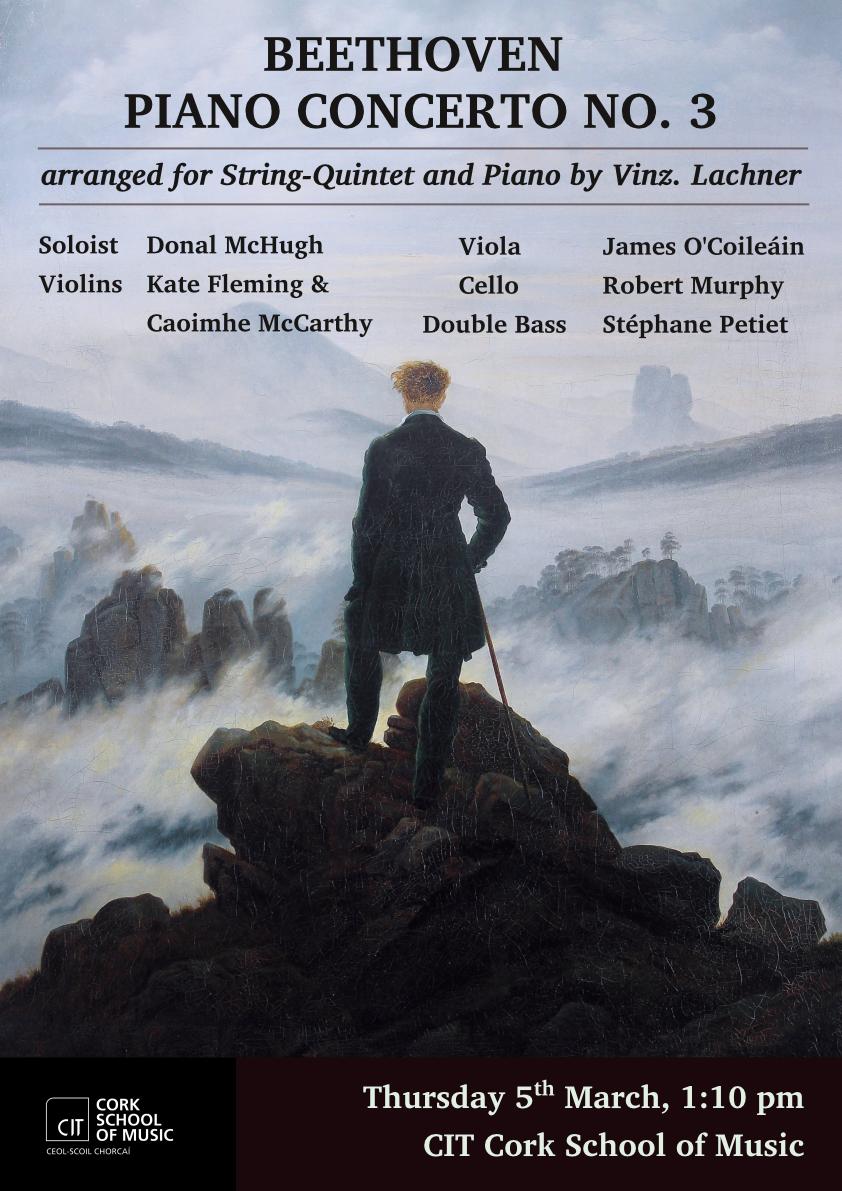Masters Recital, Performed in the Curtis Auditorium, CIT Cork School of Music, 1:10pm 5 March 2020

Beethoven Piano Concerto No. 3, Op. 37. Orchestra part arranged for String-Quintet by Vinzenz Lachner.
Link to Concert
Soloist: Donal McHugh
Violins: Kate Fleming & Caoimhe McCarthy
Viola: James O'Coileáin
Cello: Robert Murphy
Double Bass: Stéphane Petiet
Programme Notes
i) Allegro con brio
ii) Largo
iii) Rondo, Allegro
There is something about C minor. The drama that composers manage to create in this key is quite remarkable. When a composer chooses to write in C minor this, in so many examples, results in a piece that makes a real statement. A piece of music that has a conviction, energy, power, and drama. This certainly rings true for Beethoven’s third piano concerto.
The poster for the concert contains the painting Wanderer above the Sea of Fog by Casper David Friedrich. This painting sums up a lot of what this concerto expresses. It was painted in c. 1818 while Beethoven’s concerto was completed around 1800. Both show a lot of the key themes of the Romantic period – for example a great emphasis on emotion and individualism as well as the glorification of nature. While there is clearly a lot of classical influence in this concerto, Beethoven really pushes the boundaries especially in terms of the pianists role in the concerto. The initial entry in the first movement is a great example of this as well as the elaborate cadenza in this movement. In both cases the piano/pianist is a force of its own - full of power and reaching great heights. Some of the power and determination he expresses in the music could come from to his attitude to his gradually increasing deafness. In a letter written around the same time as the concerto he wrote: ‘I will seize Fate by the throat; it shall certainly not crush me completely – Oh it would be so lovely to live a thousand lives’.
i) The dramatic opening theme of the first movement returns many times both in the piano and orchestra part. Its energetic driving rhythm can be heard in some form almost the whole way through the movement. In the cadenza the piano pushes the limits of this theme and it soars through many different harmonies.
ii) The choice of key (E major) in the second movement is very far removed from the first – with four sharps as opposed to three flats it really is in a different realm. All of the drama and drive is replaced with beautiful warmth and calmness.
iii) The work returns to C minor but this time with a much more playful and excited mood. The main theme is thrown back and forth between the piano and the orchestra and there is plenty of spirit, humour, and brilliance.